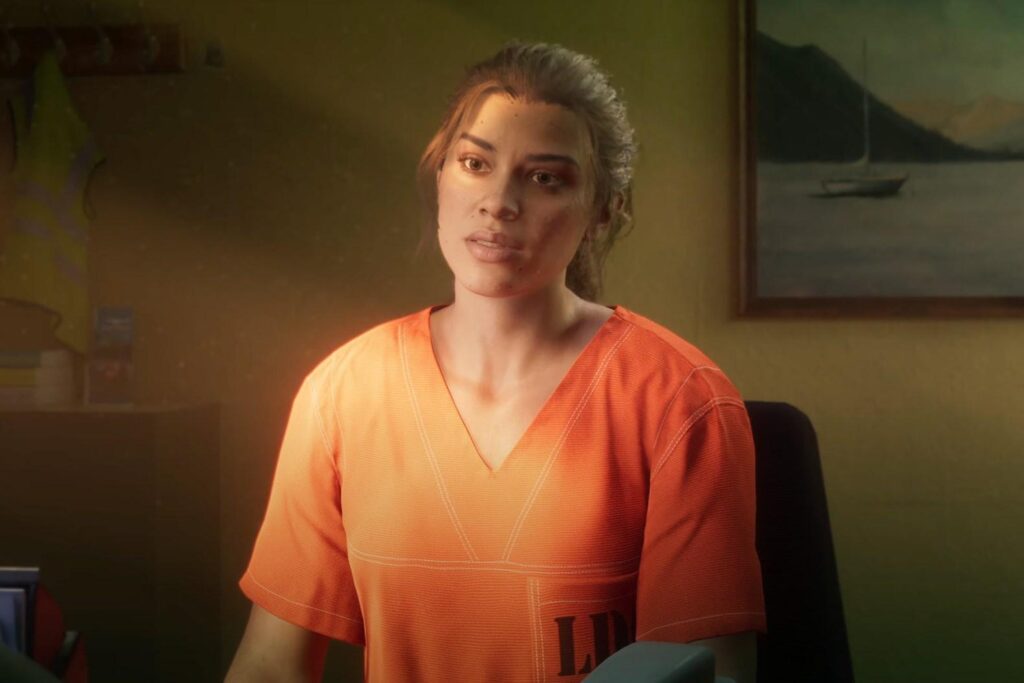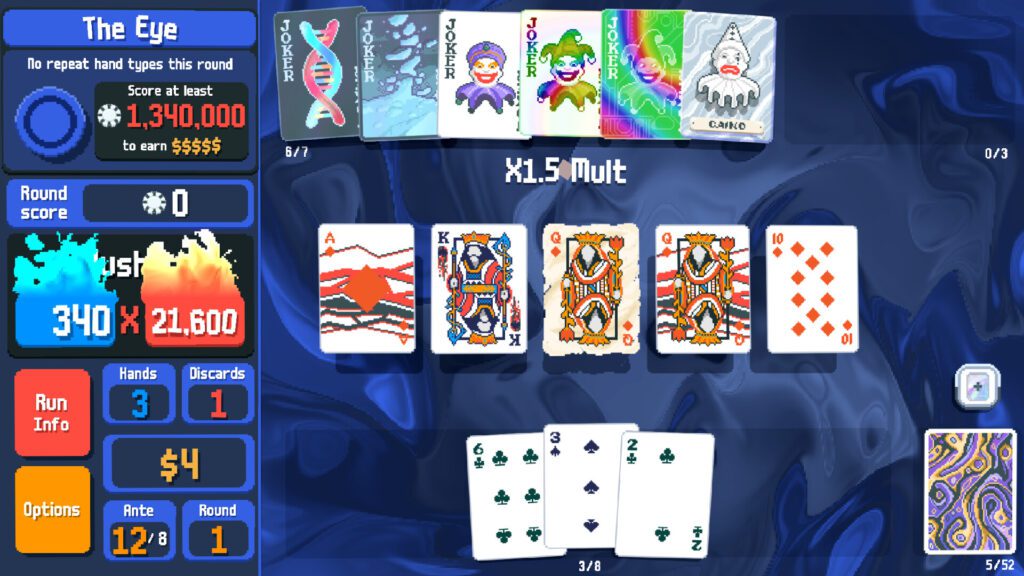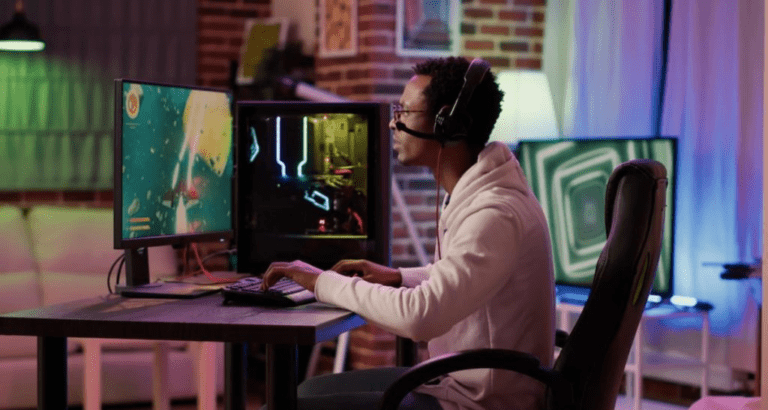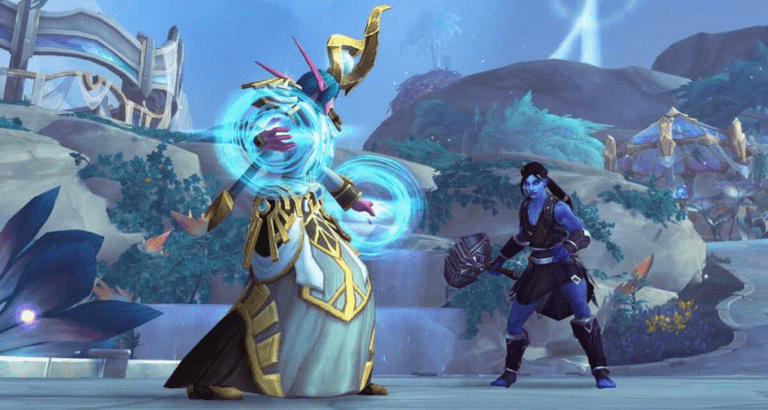For months, sometimes even years before they hit digital shelves, the anticipation around certain video games is palpable. We see massive marketing campaigns, cinematic trailers that wouldn’t look out of place on a movie screen, and showcase events dedicated entirely to revealing a few tantalizing minutes of gameplay.
Most Hollywood movies would probably kill for just a fraction of the buzz and discussion surrounding the launch of gaming’s biggest titles, wouldn’t they?
These are what we’ve come to call “blockbuster games” or “AAA games,” terms that are synonymous with the giants of the industry. They promise unparalleled visual fidelity, massive worlds, and epic experiences.
In this article, we’ll talk about what it means to be a blockbuster game, why we can compare them to highly anticipated movies, and the reasons behind gamers’ increasing dissatisfaction with them.
Blockbuster games: what are they, exactly?

In short, blockbuster games are the gaming industry equivalent of those massive summer movies dominating the box office – huge in scope, budget, and marketing. These are the products of AAA development, meaning they come from the biggest studios, employ enormous teams, and involve truly colossal financial investments.
Their characteristics are usually pretty clear: they come with the latest technology and advancements in graphics and rendering that push hardware to its limits. Also, there is voice acting sourced from dozens of talented professionals and extensive use of motion capture technology to make characters feel more lifelike.
The gameplay systems are typically complex, and the game worlds are frequently vast and full of mysteries, particularly in the popular open-world genre. More often than not, these blockbusters are sequels or new installments in well-established, globally recognized franchises – your long-running action series, beloved RPGs, or competitive multiplayer giants.
They launch with widespread availability across multiple platforms, hitting PCs and consoles simultaneously or nearly simultaneously (though not always, as some games are exclusive to a specific platform).
The insane expenses behind AAA or blockbuster games

Creating these digital epics is an incredibly expensive undertaking. Sure, we’re talking about millions, but not a handful of those, no. The budgets for major blockbuster games now routinely stretch into the hundreds of millions, sometimes even surpassing the production costs of major films.
For reference, Grand Theft Auto V is estimated to have cost Rockstar Games around $265 million, and over $310 million for CD Projekt Red’s Cyberpunk 2077.
GTA 6 is set to become the most expensive video game ever developed, with some unconfirmed rumours claiming as much money was spent developing and marketing the game as the construction of the Burj Khalifa (around $1.5 billion).
Why such eye-watering figures? We can explain part of it with the development team size. A AAA studio working on a flagship title can employ hundreds, even thousands, of developers across various disciplines – programmers, artists, designers, writers, audio engineers, and more.
These projects often span several years, and paying that many talented people for that long is a massive ongoing cost.
While game engines like Unreal Engine or Unity offer accessible starting points, major studios often invest heavily in licensing specific technologies or, like many do, developing their own proprietary engines and tools tailored to their needs. This investment is crucial for achieving cutting-edge graphics, realistic physics, and sophisticated AI.
Asset creation for a blockbuster game is a gargantuan task. Every character model, environmental object, texture, and animation requires high levels of detail to meet modern fidelity expectations. The sheer volume of assets needed to fill a large open world or provide hours of unique environments is immense.

The push for high production values extends to everything the player sees and hears. This includes hiring professional voice actors (sometimes big Hollywood names), commissioning musical scores performed by orchestras, and utilizing motion capture studios to capture lifelike character movements and facial expressions.
Quality assurance (QA) is another area with significant costs. Testing complex, massive games for bugs and technical issues is a monumental task, requiring large teams of testers working for extended periods leading up to launch and beyond.
Perhaps surprisingly to some, marketing and PR budgets often rival or even exceed the development cost itself.
Getting the word out globally requires massive advertising campaigns across television, online platforms, social media, and physical billboards. Cinematic trailers, media events, and securing stands at major industry shows all require deep pockets.
Adding further cost is localization. To reach a global audience, games must be translated and adapted, sometimes with voice-overs in multiple languages and cultural adjustments where necessary.
Finally, there are distribution costs, whether it’s fees for digital storefronts or the costs associated with physical copies. All these elements combine to create a financial undertaking that carries immense risk for the publishers and studios involved.

Why are some gamers losing faith in blockbuster games?
Despite the undeniable spectacle and the millions involved, it doesn’t take you long to see a growing skepticism and even frustration with some AAA blockbuster – it seems not all gamers are as easily swayed by the hype as they once were.
One major point of contention relates to how blockbuster games can feel “too formulaic.” With so much money on the line, publishers and developers lean towards safer mechanics and structures that have guaranteed mass appeal in the past (understandably so, right?)
This often leads to sequels that feel perhaps too similar to their predecessors, leading to sequel fatigue. Open-world games, while initially exciting, are sometimes criticized for relying on repetitive checklist-style activities that prioritize quantity over meaningful engagement.
Some players feel that this focus on a guaranteed formula stifles creative innovation compared to what’s seen in the indie or mid-tier development space.
Then, there’s the perceived “decline in quality” at launch. It has become increasingly common for highly anticipated blockbusters to launch with significant bugs, technical issues, and performance problems, requiring large patches weeks or even months later to fix them.

This can leave players feeling like they’ve purchased an unfinished or rushed product, pushed out to meet a specific release window despite not being fully ready. Is Cyberpunk 2077’s release bug fiesta still fresh in your mind?
Adding fuel to the fire are business practices that many players find frustrating (if not outright predatory).
The aggressive focus on live service elements – requiring constant online connection, daily login rewards, seasonal content – even in games primarily enjoyed solo, can feel shoehorned in.
Of course, the proliferation of microtransactions, loot boxes, and battle passes can make players feel they are being asked to pay for additional content or advantages after already paying a premium price (like $60, or now $80 or even higher) for the base game.
There’s a sense that the initial purchase sometimes doesn’t feel like a complete experience without engaging with these additional monetization systems or grinding extensively.
Cumulatively, these factors contribute to a feeling among some gamers that creative risk is being increasingly stifled in favor of predictable profit margins, leading to a less exciting and sometimes less respectful relationship between the massive studios and their audience.

Closing thoughts
In the end, blockbuster games, for all their complexities and criticisms, have been and will keep being integral to the gaming landscape for years. This is particularly true for those seeking polished, high-fidelity, and curated experiences that usually only massive budgets can achieve.
While a segment of the community expresses valid frustrations and its faith may be wavering, the gaming industry is set to grow despite showing some signs of slowing down, whether indie or AAA.
Furthermore, it’s worth remembering that independent games often provide unique, boundary-pushing experiences or fresh takes on genres, usually without the premium price tag!
And, if you’re a studio or individual looking to create that next standout gaming experience, whether blockbuster-scale or a unique indie gem, it’s tough to work without reliable development partners.
At Main Leaf, we offer expert game development and outsourcing services, equipped to handle everything from complex systems to stunning visuals. Let our 13+ years of expertise help you build the game of your dreams, and contact us below!

